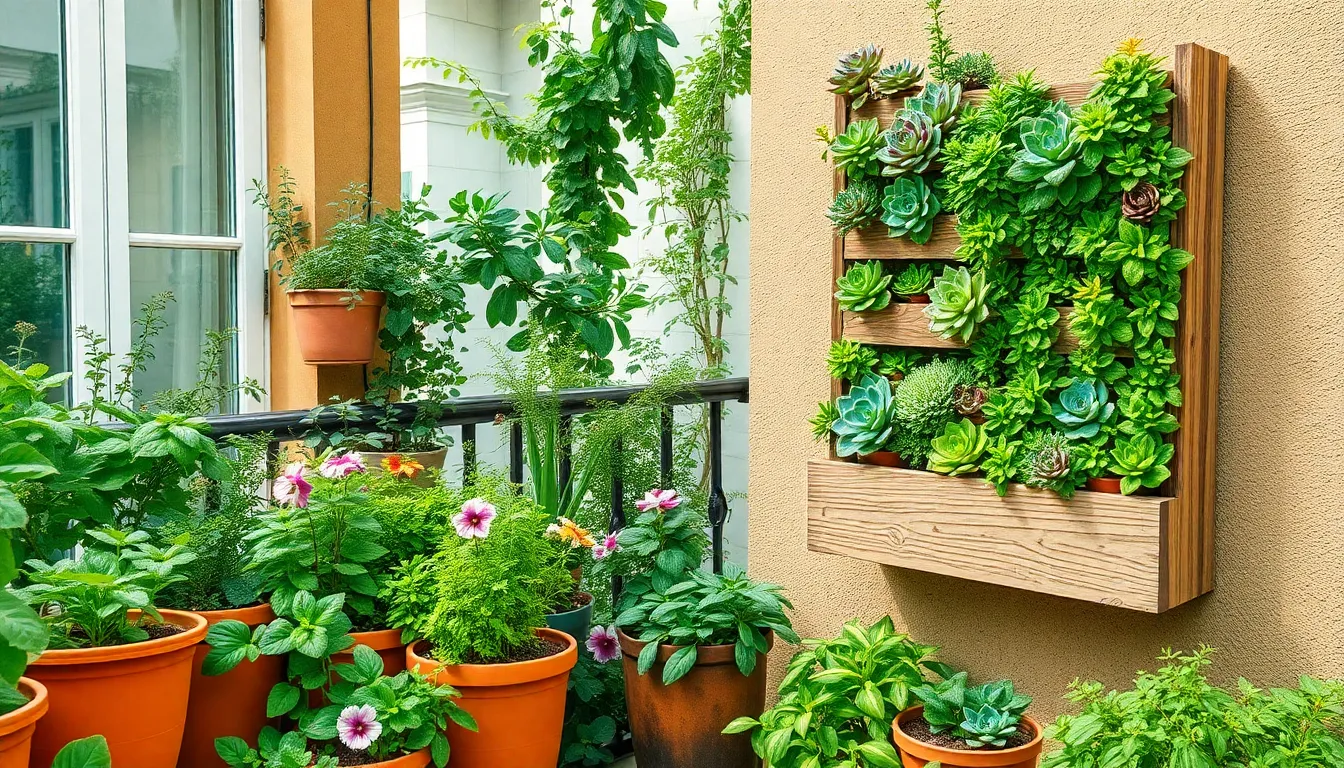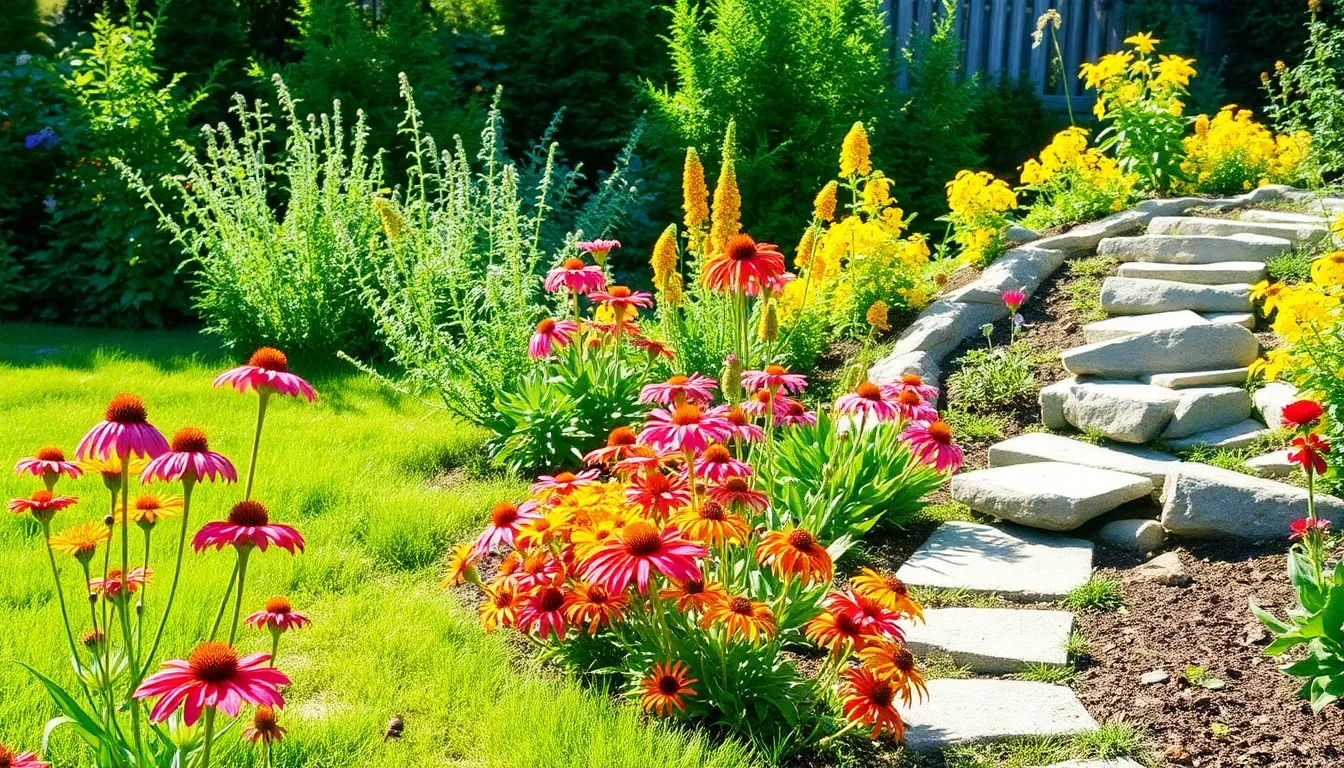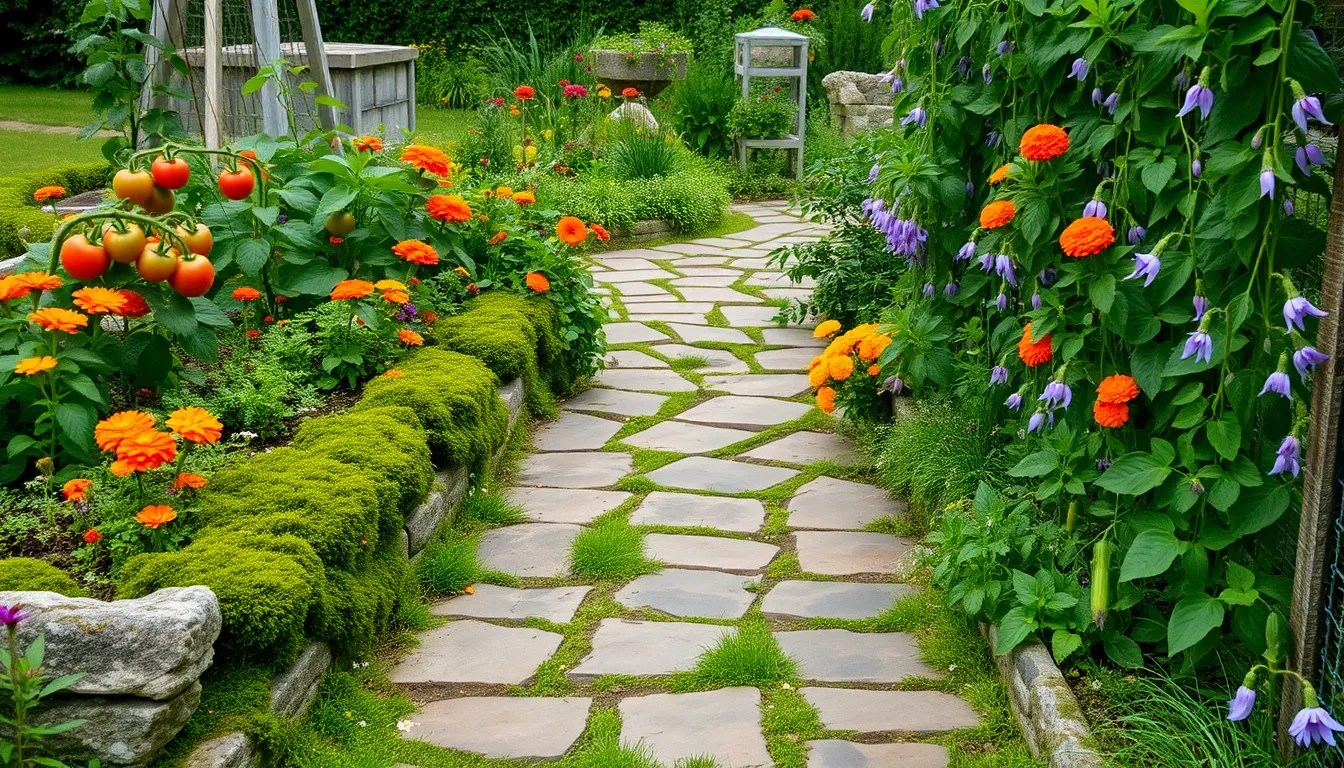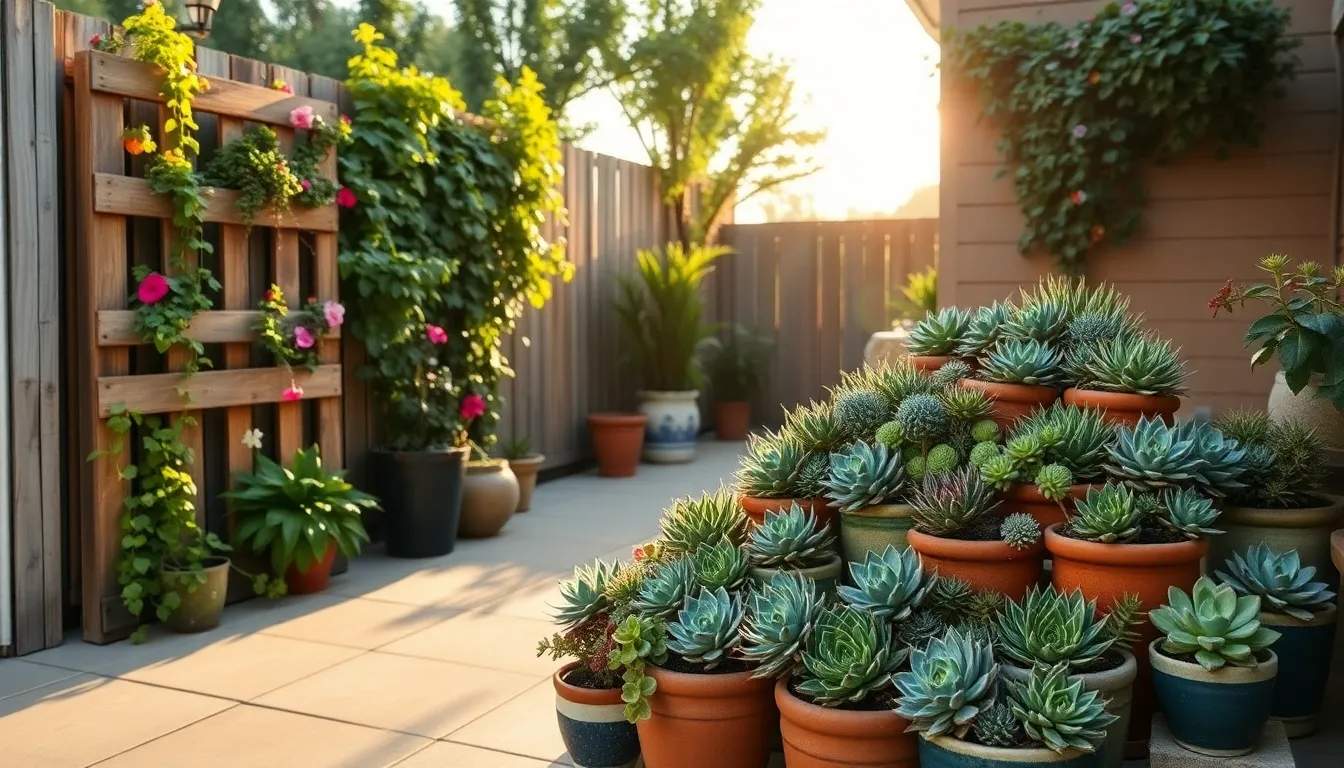In the bustling heart of urban living, where space is a coveted luxury, the dream of cultivating a lush garden might seem out of reach. Yet, whether you’re a novice planting your first seed or a seasoned gardener seeking new challenges, urban gardening offers a canvas rich with possibilities. By transforming balconies, rooftops, and even the smallest nooks into thriving green spaces, urban gardeners can breathe life into the concrete jungle.
The importance of urban gardening goes beyond just beautifying your surroundings; it plays a crucial role in promoting sustainability and enhancing mental well-being. As city dwellers increasingly seek solace in nature, these green oases offer a sanctuary that nurtures both plants and people. In this article, we’ll explore seven innovative urban garden setups that cater to every skill level and space constraint, ensuring that your urban gardening journey is as rewarding as it is feasible.
Prepare to discover how simple shifts in perspective can turn overlooked corners into verdant retreats, teeming with life and color. From vertical gardens that make the most of wall space to container gardens that thrive on patios, you’ll find practical, creative solutions tailored to fit your urban lifestyle. By the end of this guide, you’ll be equipped with the knowledge and inspiration to cultivate your own urban oasis, regardless of how limited your space may be.
Optimizing Small Balcony Gardens
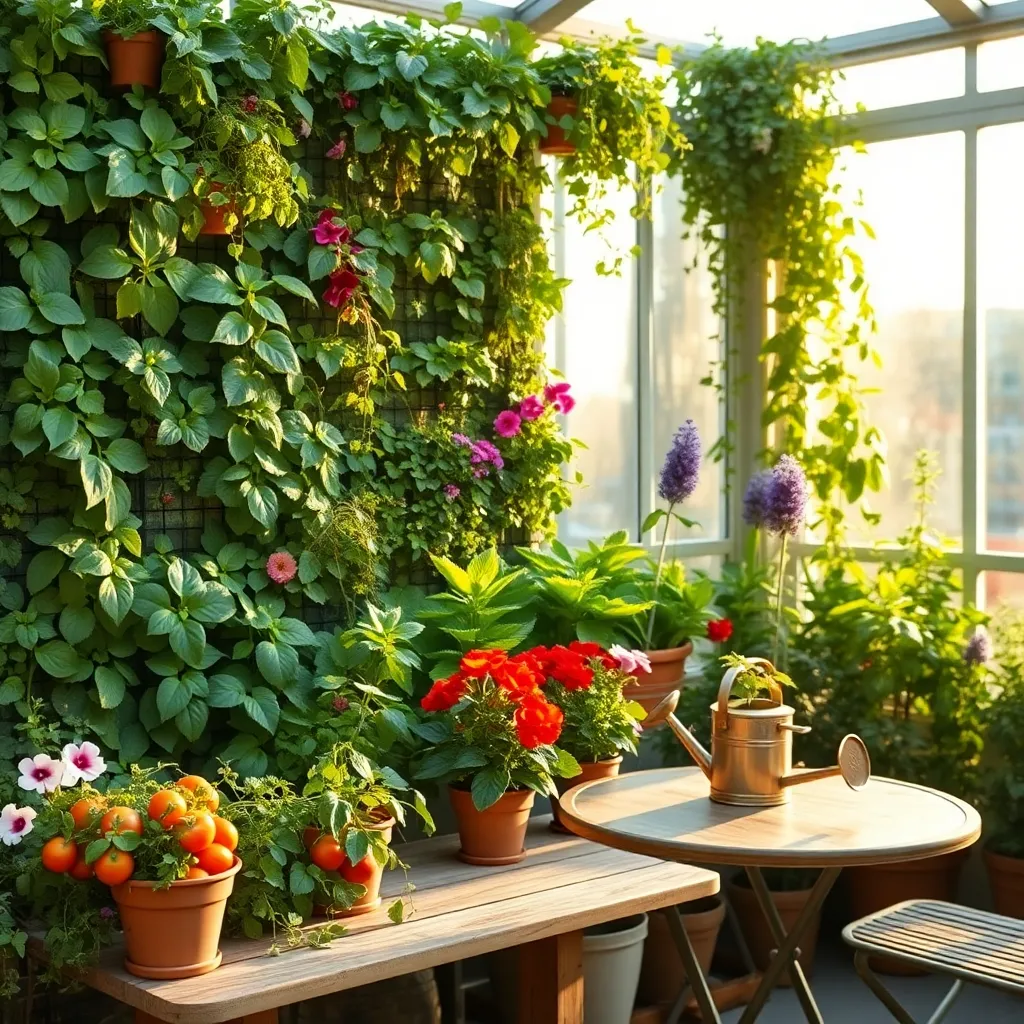
When optimizing a small balcony garden, consider using vertical space to maximize planting area. Hanging planters, wall-mounted pots, and tiered plant shelves can significantly increase your growing potential without taking up valuable floor space.
Choose plants that thrive in containers and have a compact growth habit, such as herbs, lettuce, and strawberries. These plants are not only easy to manage but also provide the satisfaction of fresh produce right at your doorstep.
Ensure your plants receive adequate sunlight, as most balcony gardens have limited exposure. If natural sunlight is scarce, invest in grow lights to supplement light during shorter daylight periods, ensuring your plants stay healthy and productive.
Watering is crucial for container gardens, as soil can dry out quickly in small pots. Use moisture-retentive soil mixes and consider self-watering pots to keep your plants hydrated and reduce maintenance time.
Vertical Gardening for Tight Spaces
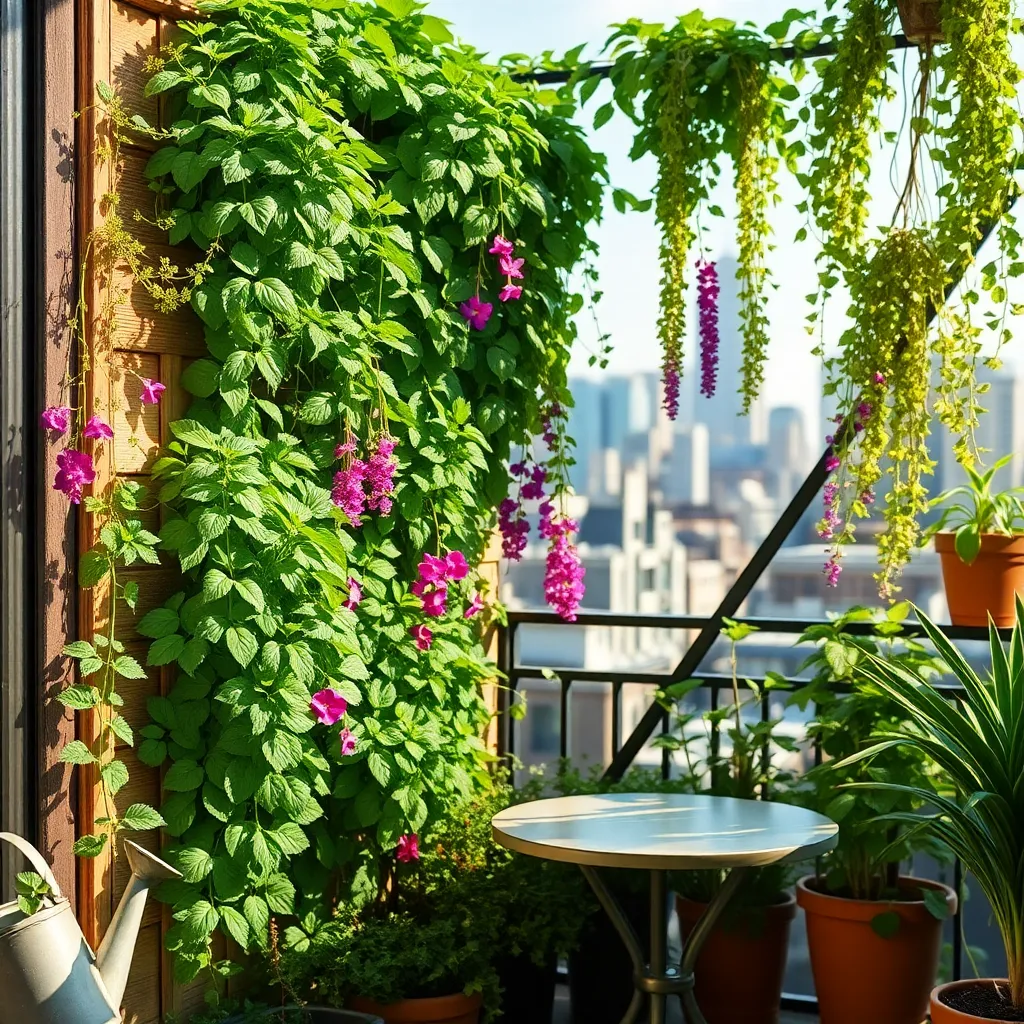
Vertical gardening is an ideal solution for urban spaces where floor space is limited but wall space is available. By utilizing vertical surfaces, you can grow a variety of plants, from herbs to climbing vegetables, which helps maximize your gardening potential.
To start a vertical garden, choose a suitable support structure like a trellis, vertical planter, or even a recycled pallet. Ensure the structure is sturdy enough to support the weight of the plants and soil, and consider adding hook or bracket supports for added stability.
Select plants that naturally grow upwards or benefit from vertical support, such as tomatoes, cucumbers, or pole beans. These plants not only save space but also improve air circulation, reducing the risk of diseases and pests.
For optimal growth, use a high-quality potting mix that retains moisture yet drains well, such as a mix containing peat, perlite, and compost. Regular watering is crucial, especially for wall planters, as they tend to dry out faster than ground gardens; consider installing a drip irrigation system for consistent moisture.
Advanced gardeners might explore hydroponic vertical systems, which deliver nutrients directly to plant roots via water. This method can increase growth rates and yields but requires careful monitoring of nutrient levels and pH balance.
Container Gardening: Versatile Solutions
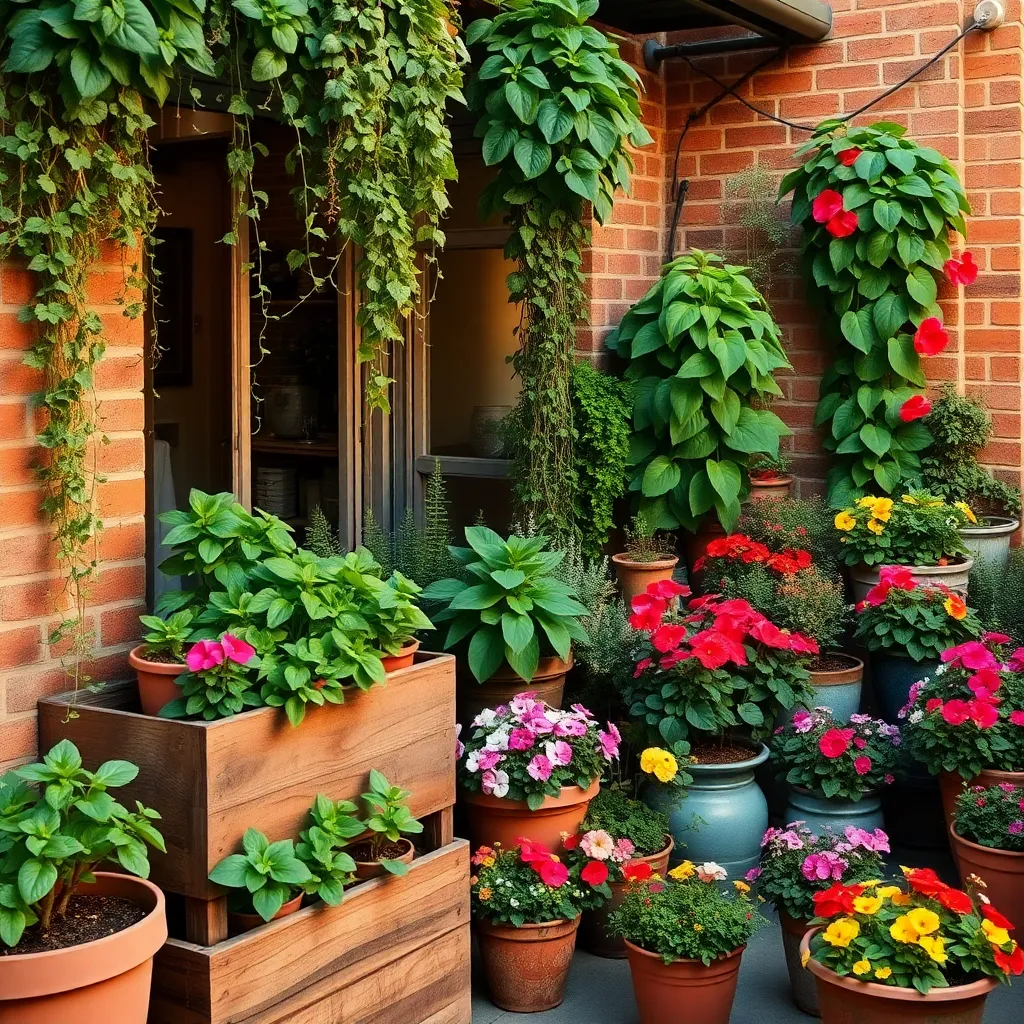
Container gardening offers a versatile solution for urban gardeners who may lack traditional garden space. By utilizing pots, planters, and other containers, you can grow a variety of plants on balconies, patios, and even windowsills, making it ideal for city dwellers.
When selecting containers, ensure they have adequate drainage holes to prevent waterlogging. Choose pots made from materials like terracotta, plastic, or metal, each offering different benefits, such as moisture retention or lightweight portability.
For those new to container gardening, start with easy-to-grow plants like herbs or leafy greens. These plants thrive in containers as they require minimal space and can be harvested continuously, providing fresh produce throughout the growing season.
Advanced gardeners might experiment with larger plants like tomatoes or peppers, which can flourish in containers with proper care. Ensure these plants receive at least six hours of sunlight daily and use a high-quality potting mix enriched with organic matter to support healthy growth.
Watering is crucial in container gardening, as soil in pots dries out faster than in-ground gardens. Check your containers daily, especially during hot weather, and aim to water deeply rather than frequently to encourage strong root development.
Rooftop Gardens: Maximizing Sunlight
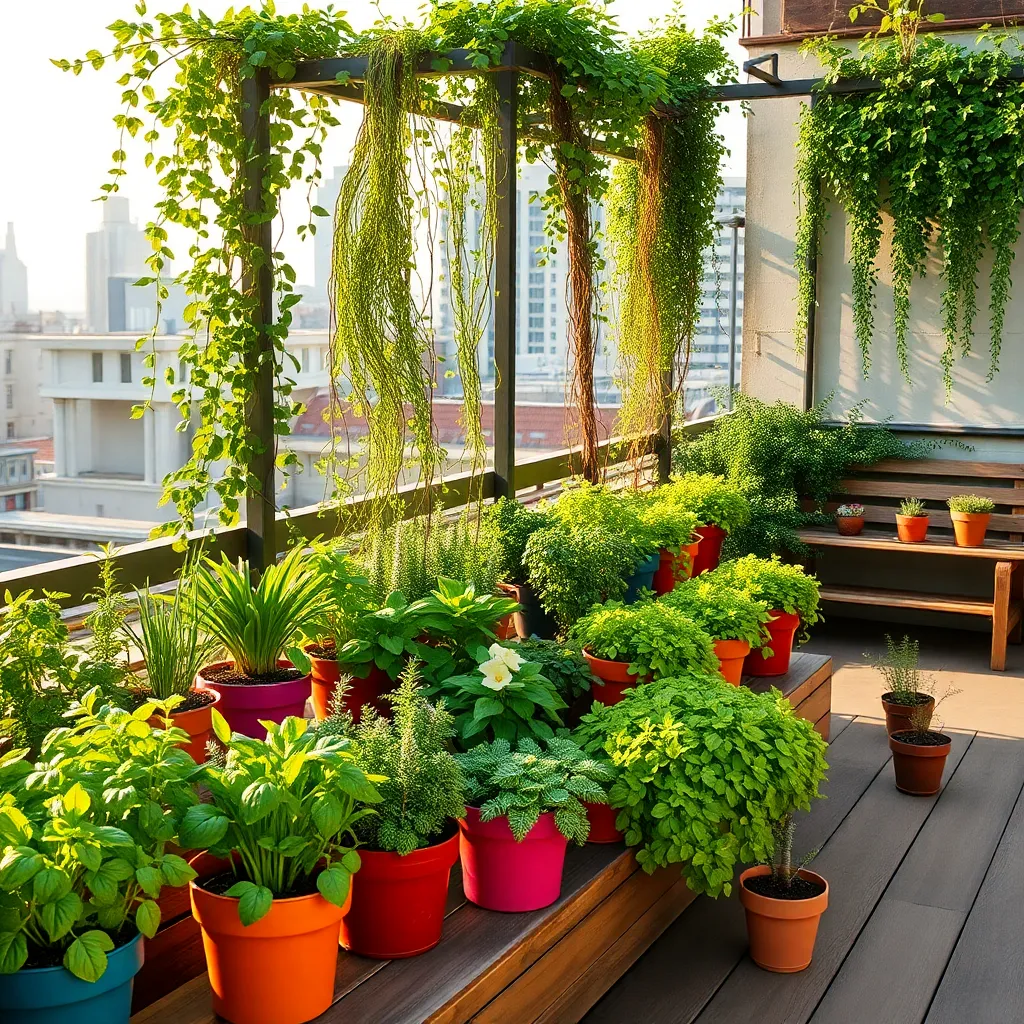
Rooftop gardens provide a unique opportunity to capture maximum sunlight, essential for healthy plant growth. To make the most of this, select plants that thrive in full sun, such as tomatoes, peppers, and various herbs like basil and rosemary.
Position taller plants to the north or west side of your garden to prevent them from shading smaller ones. Consider using reflective materials like white gravel or painted surfaces nearby to increase light exposure by bouncing sunlight onto your plants.
Incorporate raised beds or containers to elevate plants and ensure they receive unobstructed sunlight. For optimal results, use a well-draining potting mix rich in organic matter, which helps support robust plant growth and retains moisture without waterlogging.
Advanced gardeners might install a drip irrigation system to maintain consistent moisture levels, crucial in sunny conditions. Water early in the morning to reduce evaporation and allow plants to absorb moisture throughout the day, ensuring they remain healthy and vibrant.
Hydroponics: Soil-Free Urban Farming
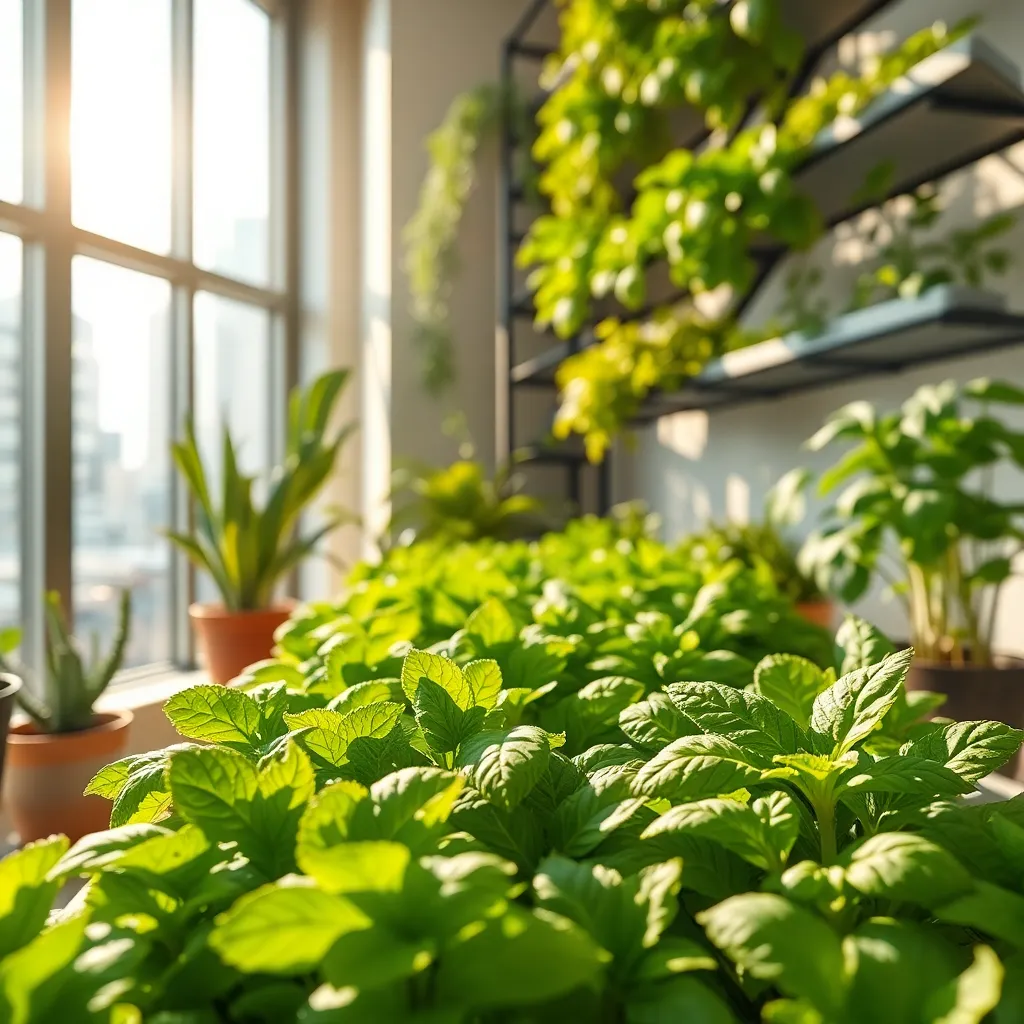
Hydroponics offers a revolutionary way to grow plants without soil, making it ideal for urban environments where space is limited. This method involves growing plants in a nutrient-rich water solution, which can be set up indoors or on patios.
For beginners, setting up a simple hydroponic system such as a Wick System is a great start. It requires minimal equipment: a container, a growing medium like coconut coir or perlite, and a nutrient solution that you can purchase from gardening stores.
Advanced gardeners might explore more complex systems like the Nutrient Film Technique (NFT), which circulates nutrient solution over the roots continuously. This setup requires a little more investment and understanding of plant needs, but it allows for rapid growth and higher yields.
When choosing plants, consider fast-growing varieties like lettuce, spinach, or herbs, which thrive in hydroponic systems. Ensure they receive adequate artificial lighting if natural sunlight is scarce in your urban setting, with LED grow lights being an energy-efficient option.
Indoor Herb Gardens for Fresh Flavors
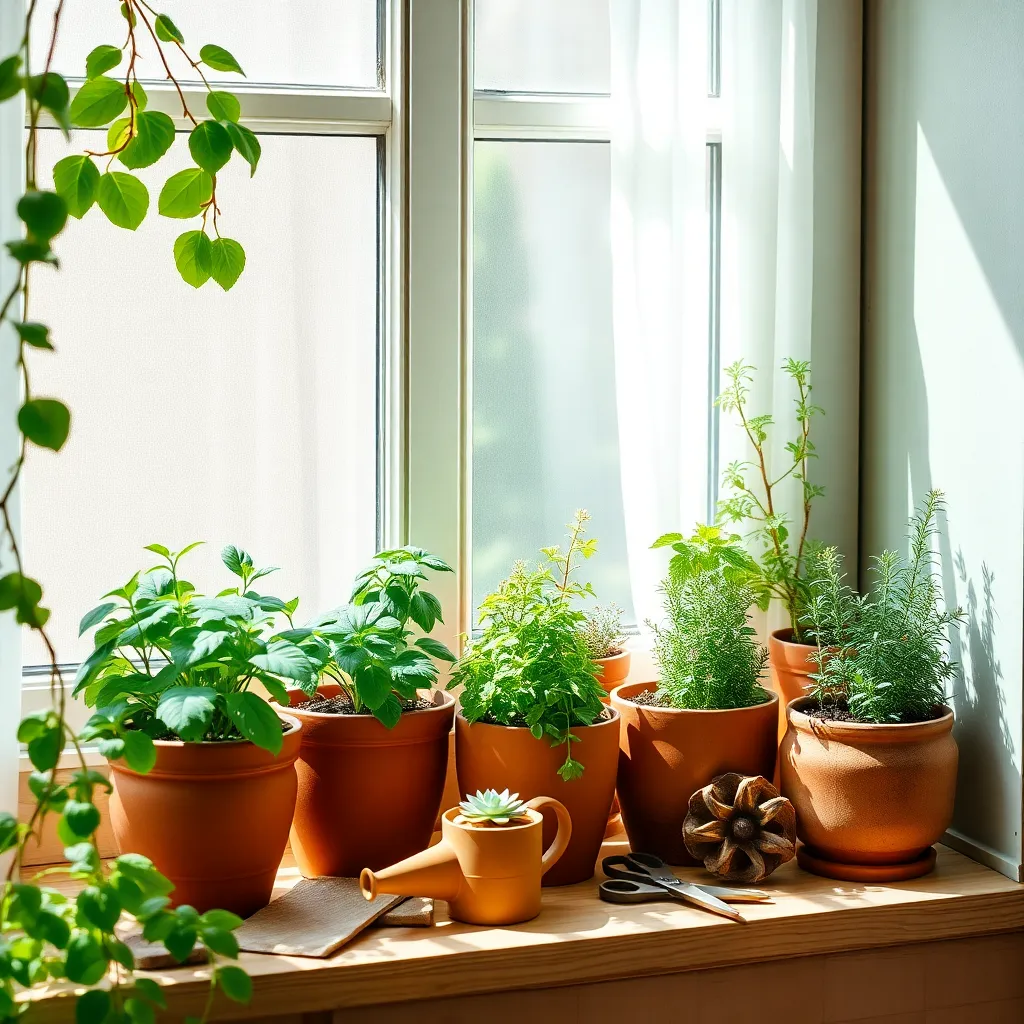
Creating an indoor herb garden is a delightful way to bring fresh flavors to your cooking while enhancing your living space. Begin by selecting a sunny windowsill that receives at least six hours of sunlight daily, as herbs thrive in bright, direct light.
Consider starting with easy-to-grow herbs such as basil, mint, and parsley, which are perfect for beginners. Use a well-draining potting mix and ensure your pots have drainage holes to prevent waterlogging, which can damage the roots.
Water herbs regularly but avoid overwatering; allow the top inch of soil to dry out between waterings to maintain optimal moisture levels. For a more advanced approach, you might try growing herbs using self-watering planters, which can help maintain consistent moisture without daily attention.
To encourage bushy growth, regularly pinch back the tips of your herbs, and harvest leaves frequently. Fertilize every 4-6 weeks with a diluted liquid fertilizer to provide essential nutrients and support vigorous growth.
Community Gardens: Shared Urban Spaces
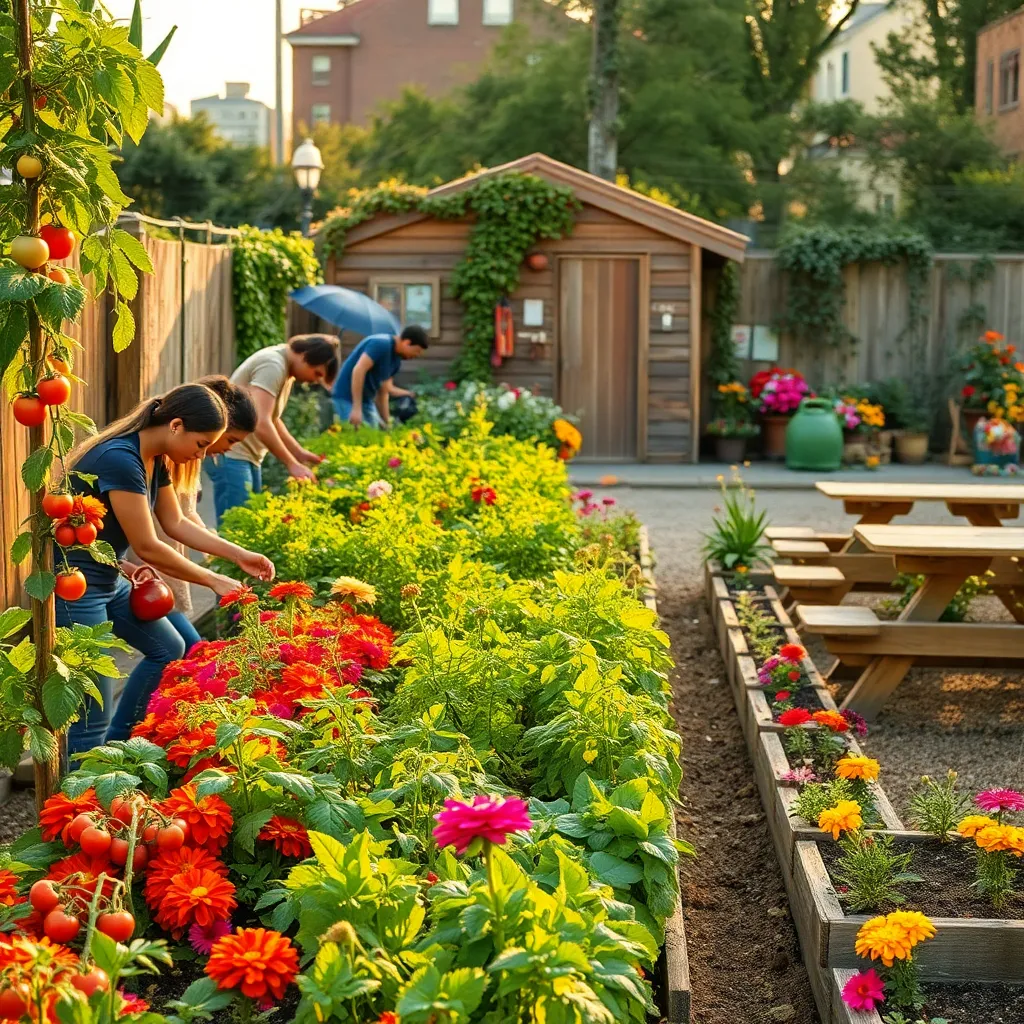
Community gardens offer a wonderful opportunity for urban dwellers to cultivate plants together in shared spaces. These gardens not only provide access to fresh produce but also foster a sense of community and shared knowledge among gardeners.
To get started, check with local municipalities or community organizations for available plots. Choose a plot that receives at least 6 hours of sunlight daily, as most vegetables and flowers thrive under such conditions.
When planning your garden, consider planting a mix of fast-growing crops like radishes or lettuce alongside slower-growing ones such as tomatoes or peppers. This approach ensures a continuous harvest and maximizes your space’s productivity.
Soil quality is crucial in community gardens, so enrich the soil with organic matter like compost or well-rotted manure. Regularly testing the pH level of the soil will help maintain the optimal growing conditions for your plants.
Watering practices can make or break your gardening success. Water deeply and infrequently to encourage deep root growth, and consider installing a drip irrigation system to conserve water and reduce evaporation.
Involve yourself in the communal aspect by sharing tips and surplus produce with fellow gardeners. Engaging in this exchange not only enhances your gardening skills but also strengthens the community bond.
Conclusion: Growing Success with These Plants
In navigating the vibrant landscape of urban gardening, we’ve unveiled seven key setups that parallel nurturing relationships: starting with a strong foundation, embracing diversity, regular maintenance, patience in growth, adaptability to change, prioritizing space and time, and fostering a supportive environment. Each of these concepts not only cultivates flourishing gardens but also strengthens the bonds between partners, friends, and family. As you reflect on these ideas, consider which area of your relationship could use a little more attention. Is it time to plant new seeds of communication, or perhaps to prune away old habits that no longer serve?
Take a moment now to discuss with your partner or loved ones which concept resonates most and plan a small activity or change you can implement today. Doing so will not only enhance your relationship but also reinforce your commitment to its growth.
Remember, relationships, much like gardens, thrive with consistent care and attention. Bookmark this article to revisit these insights, ensuring your relationship toolkit is always within reach. As you nurture these connections, envision a future where your relationships, like a well-tended garden, are resplendent with love and resilience. Let this be the season you cultivate deeper bonds and lasting happiness.

